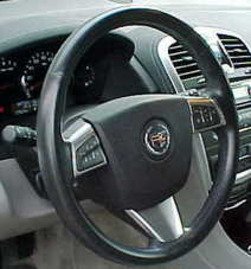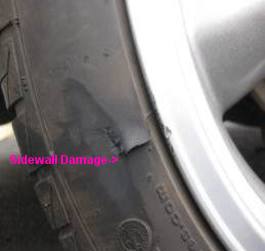
Mechanics hear the car hit a curb story from drivers often. It happens to even the best drivers.
Although it’s more common in the winter months when drivers are dealing with ice and snow, the reality is, it can happen anytime.The questions are do you have front end damage and what to do about it. This article will talk about how to evaluate the situation and determine the best course of action for your scenario.Not all curb hits are created equal. The first thing to consider is the speed the vehicle was traveling when it hit the curb. The second thing is the height of the curb.
As an example if you’re traveling 50 mph and hit a curb that’s higher than six inches, chances are there’s extensive front end damage. However, if you hit a 3 inch curb traveling 5 mph then chances are you have no damage at all.
This depends on the vehicle construction of course. As an opinionated quick rule of thumb the cheaper the automobile the more damage occurs.Always consider the impact event when determining what to do next.
When in doubt take it to a trusted mechanic for inspection of the suspension and front end. There’s a few things you can do to get an idea of what the auto repair shop might find before you go.
Front End Damage After a Curb Hit

I start by inspecting the wheel and tire that made contact with the curb. This is usually the right front tire in the United States.
When it comes to tire construction the tread is stronger than the side wall and much thicker. Often you’ll see chunks taken out of the tire side wall and sometimes there’s wheel damage.
This is usually found on the edge near the sealing bead. This kind of damage should be repaired or at least inspected immediately.
If the wheel and tire look okay or only have minor damage, such as scuffs, the next step is to drive the car. On this specialized road-test we’ll make an attempt at determining if the wheel alignment has shifted from the impact event.
Just because a car hit a curb doesn’t mean it automatically needs a front wheel alignment. Although the guy that paid for an alignment rack might tell you a different story.
In fact, after the alignment is set at the factory they lock down the adjustments. These are designed to hold in place under harsh road conditions like slamming potholes.
With that said, If the car hit a curb hard enough it’s possible for the alignment to move. There are things that you can look for on a diagnostic road test after the curb contact.
How to Tell if the Wheel Alignment Moved
I recommend finding an empty parking lot and driving the car slowly in a straight line.
Compare this with the position of the steering wheel. If there’s serious damage to the front end, the steering wheel will no longer point in the same straight ahead position it did before the impact.You can also check for a bent wheel at the same time. An indication of a bent rim is a back-and-forth wobbling of the steering wheel at low speeds. At higher MPH this might turn into what feels like a vibration.
Nevertheless, the intensity increases with road speed. If the car slams the curb really hard chances are that front end parts are bent as well.
You can get an idea on the severity of the damage by seeing how the car tracks when rolling at 5 MPH.
When things are bent you’ll notice a hard pulling condition towards the side of the impact.
If a car hit a curb with the right front wheel and bent the control arm back, this would cause a negative caster setting.
Therefore, the automobile will pull to the right side. If the steering is off center and the car pulls at low speeds you most likely have bent steering parts.
Common Problems After a Car Hits a Curb
I should mention that in most cases a mechanic should raise the automobile up in the air and inspect the front end. In this position it’s easy to see damaged parts.
Nevertheless, there are situations when the only way to detect minor damage is to set it up on an alignment rack. In this scenario taking measurements removes the guessing on what’s bent.In some situations car insurance companies want a print out of these readings to verify needed repairs. When I turned wrench’s in New Jersey, we saw quite a lot of these curb hits during the winter months.Back in the old days when a car hit a curb we would find damage to the ball joint area and sometimes the tie rod ends. Now, with modern sub-frame construction it’s more common to find bent control arms.
You know the old saying, they don’t make them like they use to. Bookmark or share this page with someone who’s car hit a curb.
Here on the you fix cars website I’ve devoted an entire section on automobile steering and suspension. You can browse through the pages and learn more about the front end of your vehicle.
To get a complete rundown of what is available here on this do-it-yourself auto repair website this next link will take you back to the YouFixCars.com homepage.

